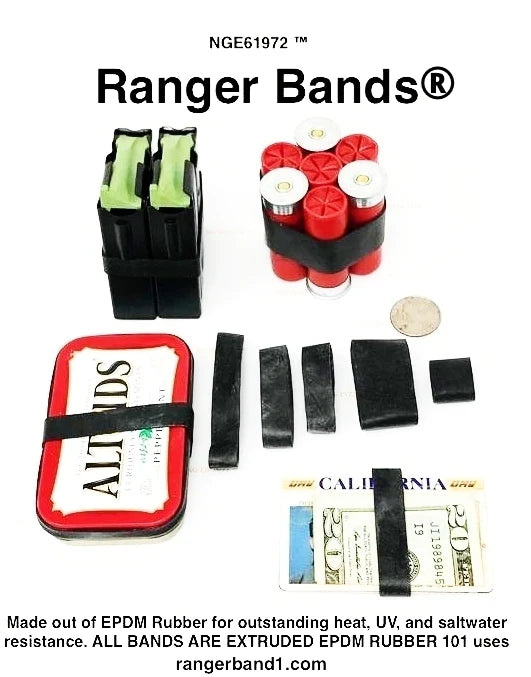Ranger Bands® are suitable for: Camping / outdoors and photography (securing light modifiers to shoe-mount flashes, cables, and cords) and anything else you come up with.
From Thomas-dot-net (searched 'EPDM characteristics'):
What is EPDM Rubber?
EPDM (ethylene propylene diene monomer) is a synthetic rubber made up of ethylene, propylene, and diene monomers. Its molecular structure has a single bond, chemically saturated backbone, which makes it extremely resistant to outdoor conditions. This is because ozone and UV rays aren’t able to break up its molecular structure in the same way as rubbers with double bonds.
EPDM Properties
EPDM’s biggest advantages lie in how weatherproof it is outdoors. It can resist abrasion, UV rays, ozone, aging, and weather, and it’s the most waterproof rubber available. EPDM is also steam resistant, functioning in up to 392 degrees F (200 C) without air, and chemical resistant, including to polar fluids. With similar properties to silicone rubber below 250 degrees F, EPDM is resilient, has low electrical conductivity, and adheres easily to metals. It’s also very flexible, with 600% elongation and a tensile range of 500-2500 psi, while functioning well in temperatures from -50 degrees F (-45 C) to 350 degrees F (177 C). On top of that, EPDM insulates and reduces noise, part of the reason it’s so commonly used in the automotive industry.
How long does EPDM last? It depends on the application it’s used in as well as the conditions under which it’s working. When constantly working at the extremes of its working temperature, EPDM’s lifespan will shrink dramatically. However, if properly taken care of, EPDM products can last for decades. Roofing made from EPDM can last 30-50 years, and liners can last for 20.
EPDM’s most major drawback is its vulnerability to solvents, hydrocarbon oils, and some lubricants, which can cause damage. Additionally, unlike silicone, it’s not flame resistant, and it’s also not recommended for food application. Finally, while EPDM has fair tear resistance, other rubbers such as SBR are better.
What is the difference between SBR and EPDM rubber?
By comparison, SBR rubber has lower resistance to abrasion, light and heat, and is more flammable; it is also smelly and gives off more VOCs, unlike the virtually odorless EPDM.

 Search
Search

